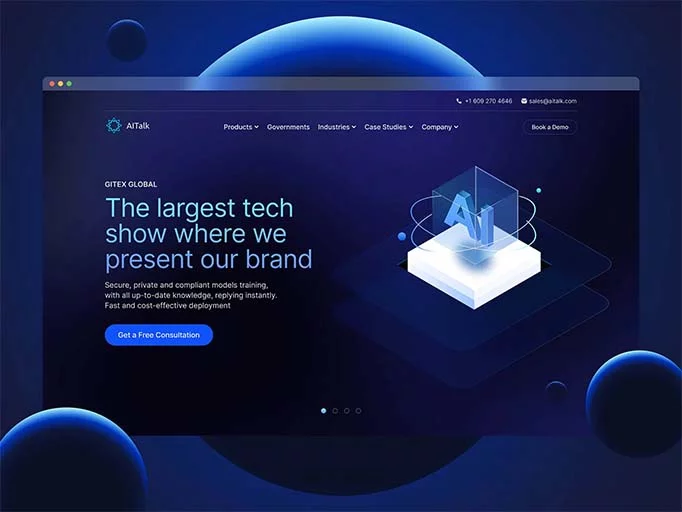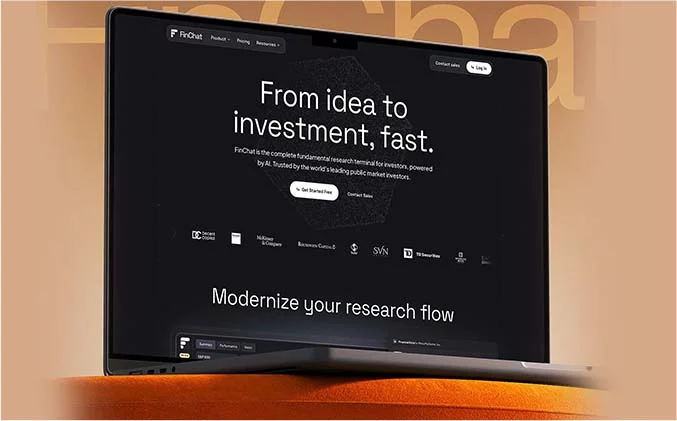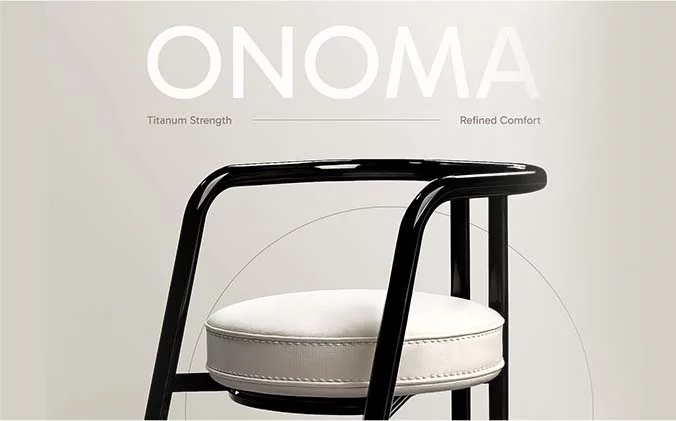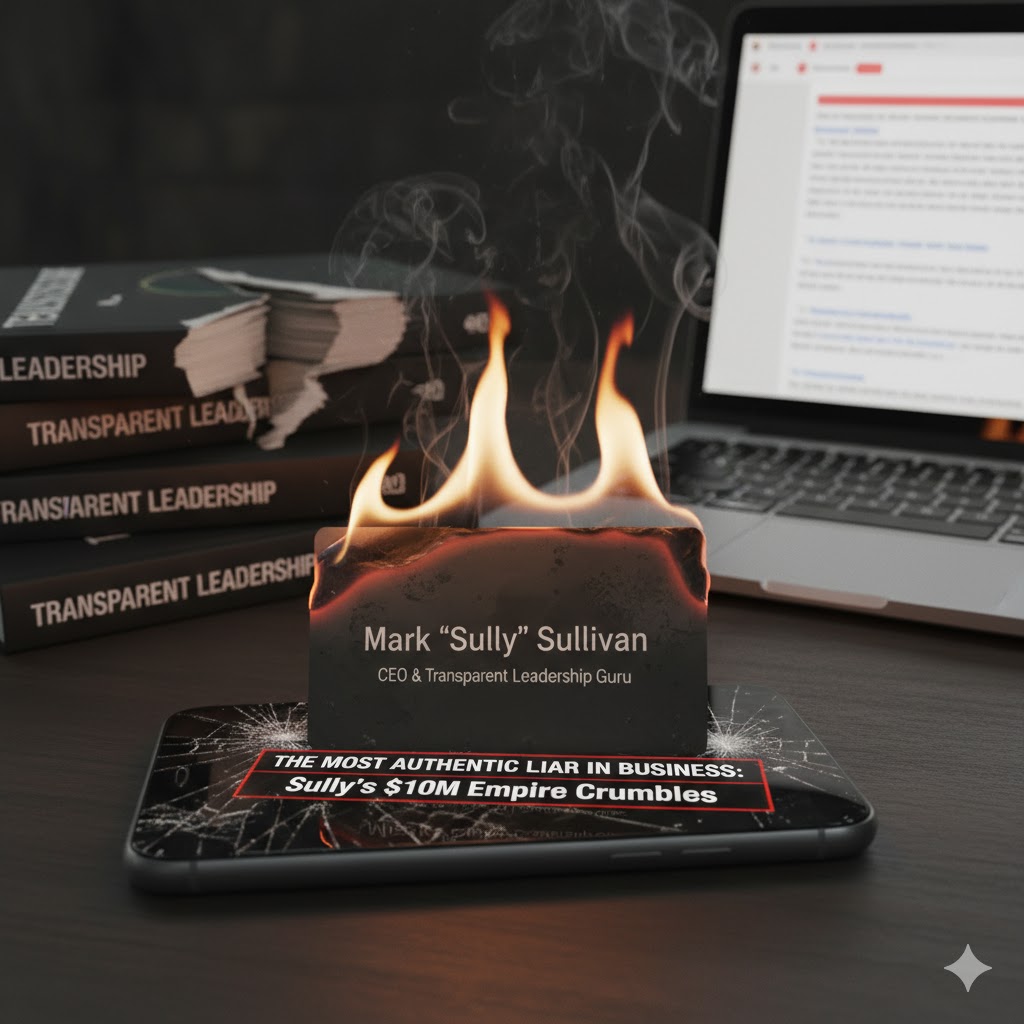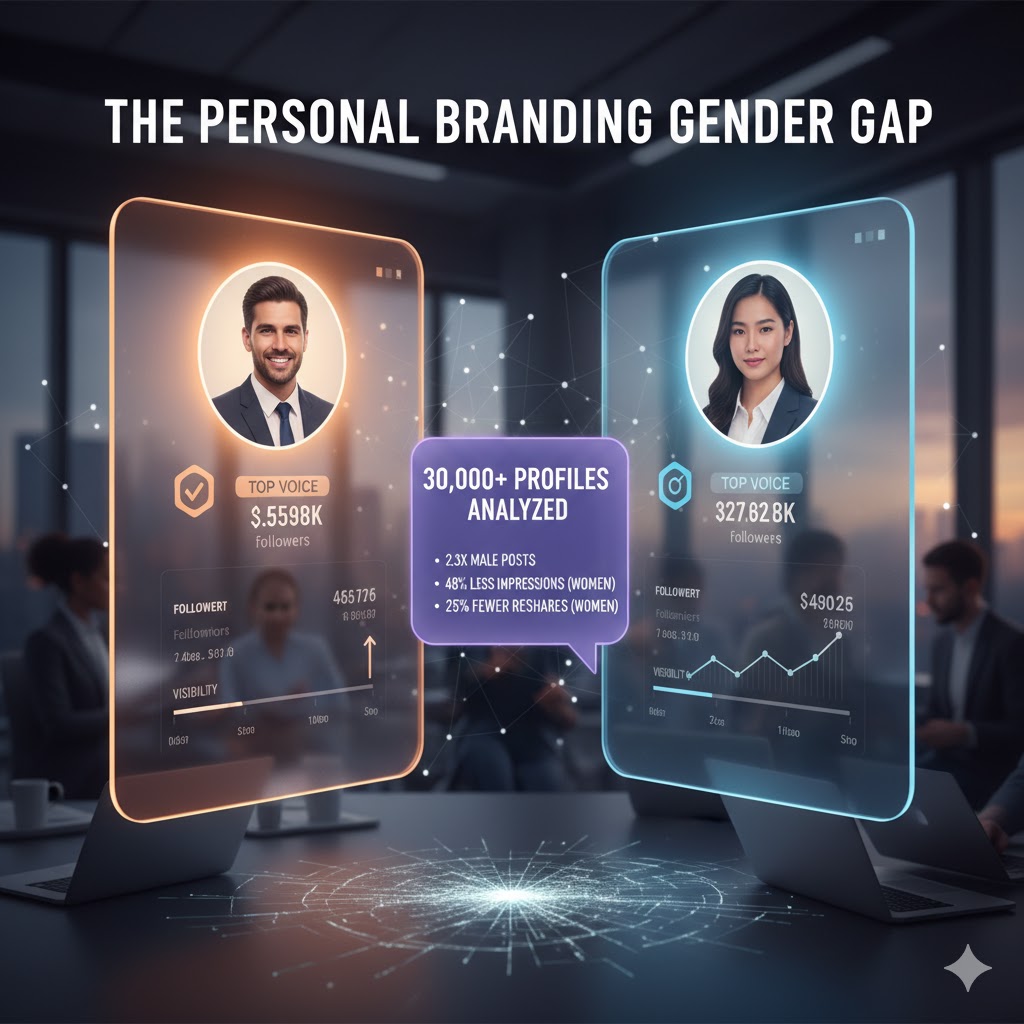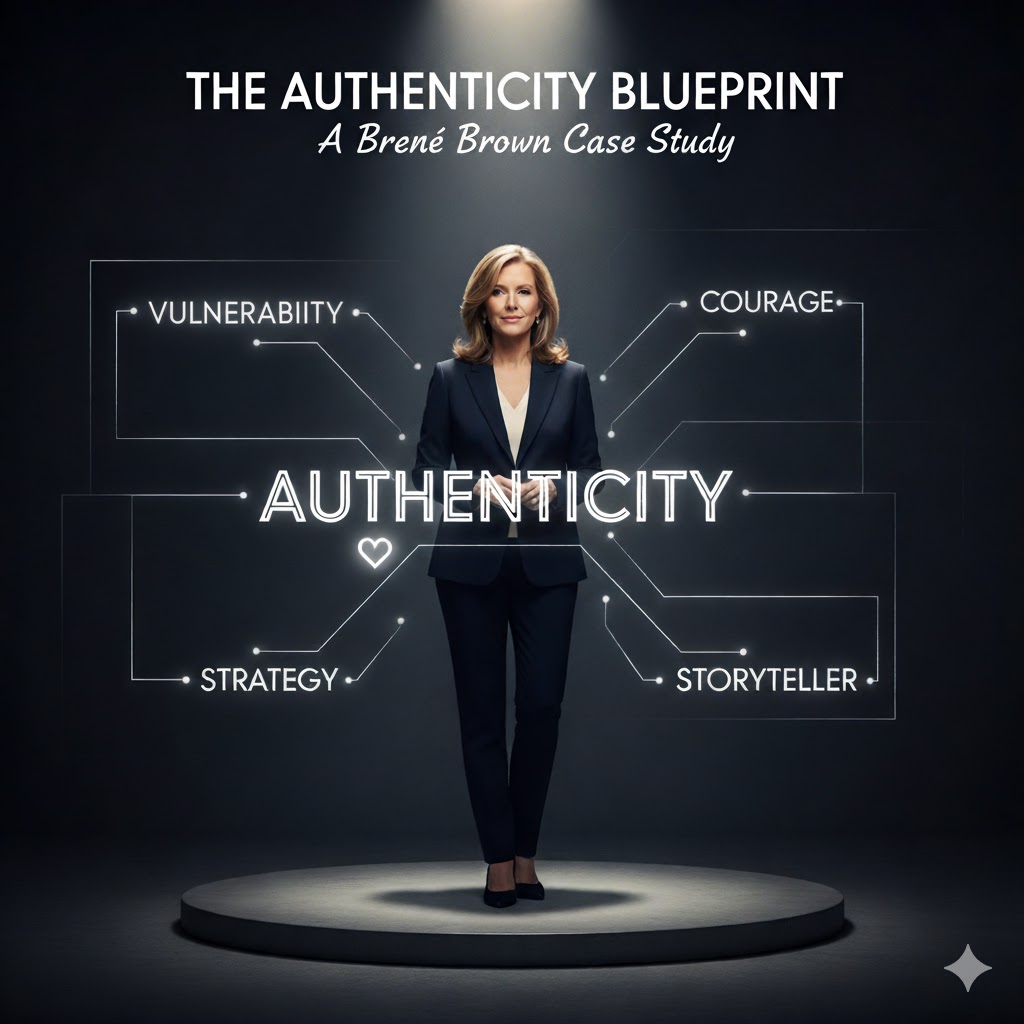
Before 2010, Dr. Brené Brown was an academic in the most traditional sense. A research professor at the University of Houston’s Graduate College of Social Work, she inhabited a world of rigorous qualitative data, peer-reviewed studies, and scholarly discourse.
Her subjects of study shame, empathy, and vulnerability, were complex, emotionally charged, and largely confined to the corridors of social science. Her reputation was that of a dedicated, respected researcher making contributions within her field.
Today, that quiet academic reputation has been transformed into a global personal brand of immense power and reach. Brown is a six-time #1 New York Times bestselling author, the host of two major Spotify podcasts, Unlocking Us and Dare to Lead, and the subject of a Netflix special, The Call to Courage. Her name has become synonymous with the very concepts she studies; to speak of vulnerability in modern culture is, almost inevitably, to invoke the name Brené Brown. This transformation from an obscure academic to a cultural touchstone is not an accident of fate. It is a masterclass in the power of an authentic, strategically cultivated personal brand.
This case study explores a critical distinction. A reputation is the passive perception others hold of you. In contrast, a personal brand is the intentional practice of defining and expressing your unique value. Brown’s story reveals a personal brand is more than a professional identity. It is the combination of one’s skills, values, and narrative. This mix is strategically communicated to build credibility and trust. This, in turn, creates meaningful opportunities. A personal brand exists whether you actively cultivate it or not. The goal is to make it intentional. Brown’s career provides a powerful blueprint for doing so.
The Power of a “Non, Branded” Brand
The most compelling aspect of the Brené Brown brand is that its power derives from an almost complete inversion of conventional branding wisdom. Standard advice often begins with the external trappings: crafting a message, building an online presence, and developing a visual identity. These elements are treated as the foundational steps to creating a perception in the marketplace. Brown’s trajectory, however, demonstrates a more profound and sustainable model: a brand built from the inside out, where substance dictates style.
Her journey did not begin with a marketing plan but with two decades of rigorous academic research into the core mechanics of human connection. The “product” was not a carefully crafted persona but a set of hard-won, data-backed insights into universal human experiences. When she stepped onto the TEDx Houston stage in 2010, her talk was not a pitch but a dissemination of her life’s work, delivered with the very vulnerability her research championed. The global audience that discovered her did not connect with a logo or a tagline; they connected with the profound resonance and authenticity of a powerful idea.
Brand infrastructure developed subsequently. This included the website, polished book covers, and podcast branding. These elements emerged as a necessary response to overwhelming demand for her message. This sequence is critical. The strength of the core idea created demand for the brand. This allowed all branding efforts to feel organic and authentic, not manufactured. It challenges the prevailing notion of branding as a superficial exercise in perception management. It also posits a more powerful alternative: a brand that amplifies a message of undeniable substance.
The Catalyst – Deconstructing “The Power of Vulnerability”
The 2010 TEDx Houston talk was the single catalytic event that transformed Brené Brown from an academic to a public figure. This 18-minute presentation was not merely a speech; it was the public unveiling of every core component of her future brand. It functioned as the “big bang” moment, a concentrated artifact containing the DNA of the entire ecosystem that would follow.
Setting the Stage: A Researcher-Storyteller Emerges
From the opening moments of the talk, Brown defines her Unique Value Proposition (UVP) with startling clarity. She recounts an event planner’s struggle to categorize her, ultimately suggesting the label “storyteller” because “researcher” sounded “boring and irrelevant”. Brown embraces this dual identity, declaring herself a “researcher-storyteller”. This is not just a clever introduction; it is a brand promise. It signals to the audience that they are about to receive something rare: stories with the weight of data and data with the soul of a story.
She then frames the central conflict of her professional journey. She describes her initial academic mission, guided by the mantra “if you cannot measure it, it does not exist,” to control and predict the “messy topics” of human emotion. This sets up a compelling narrative arc: her own research forced her to abandon this quest for certainty and instead embrace its opposite. The data itself led her to an inconvenient and deeply personal truth: the way to live a wholehearted life is not to control and predict, but to lean into vulnerability and uncertainty. This narrative of discovery and personal transformation makes her findings not just credible, but deeply compelling.
The Core Message: Codifying the Brand’s Pillars
The talk’s enduring power lies in its ability to distill years of complex academic research into a clear, accessible, and emotionally resonant framework. In doing so, it established the foundational lexicon of her brand, giving a name to feelings and experiences that millions recognized but could not articulate. These pillars include:
- Connection: She defines this not as a social nicety but as the fundamental purpose of human existence. “Connection is why we’re here,” she states, grounding her entire thesis in a universal human need.
- Shame: She provides a powerfully simple definition for this complex emotion, calling it the “fear of disconnection”, the worry that if people see who we truly are, we won’t be worthy of connection.
- Vulnerability: This is the talk’s central theme, which she redefines not as a weakness to be avoided, but as “emotional risk, exposure, uncertainty”. Crucially, she reframes it as the “birthplace of joy, of creativity, of belonging, of love” and our “most accurate measurement of courage”.
- Worthiness: She identifies this as the single variable separating those who feel a strong sense of love and belonging from those who do not. The “whole-hearted,” as she calls them, are those who simply “believe they’re worthy of love and belonging”.
This act of defining, simplifying, and reframing complex emotional concepts is a hallmark of thought leadership branding. It provides an audience with a new language to understand their own lives, instantly establishing the speaker as an authority and a trusted guide.
The Performance of Authenticity: Living the Message
The talk transcends a mere academic lecture because Brown does not just report on her findings; she embodies them. The most powerful moment comes when she shares the deeply personal story of her “breakdown” (or, as her therapist reframed it, a “spiritual awakening”) that followed her research discovery. She recounts the visceral discomfort of realizing her life’s work pointed toward a way of living, with vulnerability, that she herself was actively avoiding.
This is the ultimate act of “showing, not telling”. By performing vulnerability while discussing vulnerability, she forges an unbreakable bond of trust with the audience. Her authenticity is palpable; it is the alignment of her message, her values, and her actions in real-time. This moment of raw honesty demonstrates that she is not an expert preaching from on high but a fellow traveler on the same difficult path. Her later coining of the term “vulnerability hangover” to describe the aftermath of the talk further humanizes the experience, making her brand both aspirational and deeply relatable.
The TED Talk as a Minimum Viable Product for a Personal Brand
From a strategic perspective, the 2010 TEDx talk can be analyzed as a perfect Minimum Viable Product (MVP) for a personal brand. In the world of startups, an MVP is a core version of a product released to a market to test a fundamental business hypothesis with minimal investment. It is designed to gauge market fit before committing to full-scale development.
Before the talk, Brown’s “market” was primarily the academic and social work communities. The potential for her research to resonate with a mainstream audience was a significant, unproven hypothesis. The TEDx platform provided a global stage at a minimal cost, and the 18-minute format forced her to distill her entire body of research into its most potent and accessible form, her core value proposition.
The talk’s explosive viral success, it is now one of the most-viewed TED talks in the world with over 60 million views, was the equivalent of overwhelming, positive market feedback. It was definitive proof that a massive, untapped audience was hungry for substantive conversations about vulnerability, shame, and worthiness. This market validation provided the data and the confidence to justify scaling the brand. It directly precipitated the major book deals for titles like Daring Greatly, the high-profile speaking engagements, and eventually the entire media ecosystem of podcasts and television specials that define her brand today. The TED talk was the proof-of-concept that transformed a niche academic expertise into a viable, global brand.
The Architecture of a Research-Backed Brand
Following the catalytic success of her TED talk, Brené Brown and her team began the work of constructing a durable, multi-platform brand. An analysis of this structure reveals a masterful integration of core branding principles, all anchored to the central pillars of research and authenticity. This architecture provides a blueprint for how to build a brand that is not only visible but also deeply credible and resonant.
Defining the Niche: Owning the Conversation on Vulnerability
Effective personal brands do not try to be everything to everyone; they own a specific niche. Brown’s brand exemplifies this principle. While her academic journey began with the broad topic of human connection, her research repeatedly led her to the primary obstacle that prevents it: shame. By focusing her public-facing work on this core problem (shame) and its antidote (vulnerability), she carved out a unique and emotionally charged territory.
This was a strategic act of differentiation. Instead of being a general sociologist or a broad-based “expert on relationships,” she became the vulnerability researcher. This specificity made her brand memorable and established her as the go-to authority in a field she largely defined for the public. It demonstrates a critical branding paradox: by narrowing her focus to a deep, specific niche, she tapped into a universal human experience, ultimately achieving the broadest possible appeal.
The Unique Value Proposition (UVP): The Rigor of a Researcher, The Heart of a Storyteller
A Unique Value Proposition (UVP) is the concise statement of the distinct value an individual brings to their audience, articulating what makes them different from anyone else in their field. Brown’s UVP is a powerful synthesis of two seemingly disparate archetypes: the Researcher and the Storyteller.
- Credibility (The Researcher): The foundation of her entire brand is two decades of rigorous qualitative research. She consistently emphasizes that her conclusions are not just personal opinions or self-help platitudes; they are data-driven insights derived from thousands of interviews and stories. This academic grounding lends her immense authority and differentiates her from a crowded field of inspirational speakers.
- Relatability (The Storyteller): She possesses a rare talent for translating dense, complex social science concepts into accessible, human narratives. She frequently uses her own life—her struggles with perfectionism, her “breakdown,” her experiences as a parent, as the primary case study, making her research feel immediate and deeply personal.
This fusion of empirical rigor and emotional resonance is the engine of her brand. The research provides the credibility that makes people listen, while the storytelling provides the emotional connection that makes them care.
Radical Authenticity and Consistency: The Unbreakable Core
Authenticity is the alignment of one’s values, voice, and actions, while consistency is the practice of maintaining that alignment across all platforms and over time. Together, they build the trust that is the bedrock of any strong personal brand. Brown’s brand is a masterclass in both.
Her core message, that vulnerability is a form of courage, is not just a topic she discusses; it is a value she visibly lives. Her public persona is built on a foundation of sharing her own imperfections, her “vulnerability hangovers,” and her ongoing struggles to practice what her research teaches. This radical transparency creates a powerful sense of trust. The message is relentlessly consistent, whether in a bestselling book, a podcast interview, an Instagram post, or a Netflix special. Every piece of content reinforces the same core values of courage, vulnerability, and empathy, ensuring her audience always knows what she stands for.
Building a Multi-Channel Content Ecosystem
A modern personal brand must build an online presence and share valuable content on the platforms where its target audience is active. Brown has constructed a comprehensive and strategic content ecosystem, with each channel serving a distinct purpose while reinforcing the central brand message.
Website (The Hub):
Brenebrown.com serves as the central repository for her brand. It is more than a digital business card; it is a value-rich resource hub. By offering free tools like reading guides, discussion starters, and assessments, the site deepens audience engagement and provides tangible support for those looking to apply her work in their lives.
Books (The Deep Dive):
Her numerous bestselling books, such as Daring Greatly and Atlas of the Heart, provide the format for in-depth, structured exploration of her research and frameworks. They are the cornerstones of her intellectual property, allowing readers to engage with her ideas at their own pace.
Podcasts (The Conversation):
Her podcasts, Unlocking Us and Dare to Lead, create a more intimate and immediate connection with her audience. The conversational format allows her to explore topics with more nuance, react to current events, and engage with other thought leaders, keeping her brand dynamic and relevant.
Social Media (The Community):
With over 5.1 million followers on Instagram alone, her social media presence is used to foster a community around her work. She shares quotes, personal reflections, and behind-the-scenes content that makes her brand feel accessible and human.
Mainstream Media (The Scale):
High-production projects like her Netflix and HBO Max specials are strategic moves to bring her message to a massive, mainstream audience, expanding her reach far beyond those who would actively seek out her books or podcasts.
This multi-channel strategy ensures that her brand is accessible in multiple formats, catering to different learning styles and levels of engagement, thereby maximizing its reach and impact.
The Brené Brown Brand Architecture
The following table provides a structured summary of how Brené Brown’s brand manifests across key theoretical components, offering a clear, at-a-glance analysis of its architecture.
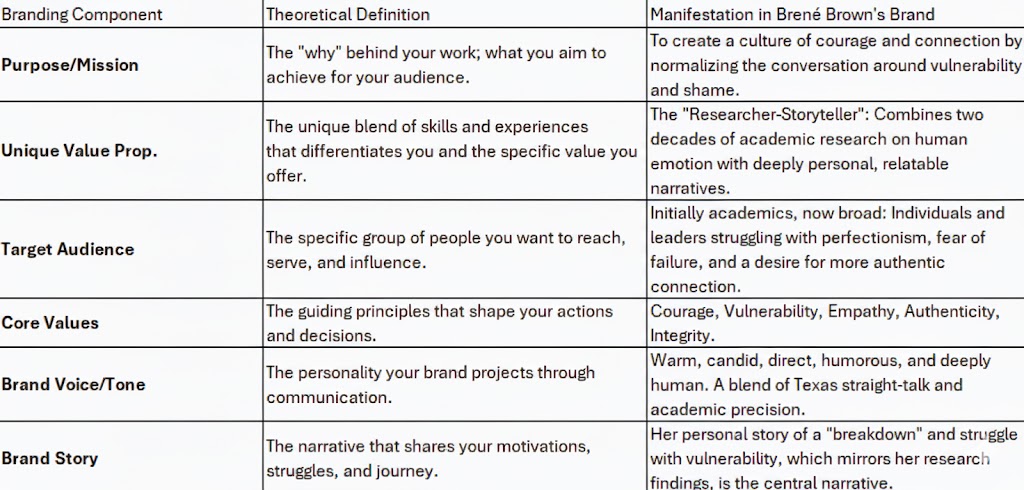
Navigating the Arena – Brand Management and Evolution
Building a personal brand is not a static event; it is a dynamic process of growth, adaptation, and protection. As a brand’s influence expands, so do the challenges of managing its perception, addressing criticism, and scaling its message without sacrificing its core integrity. Brené Brown’s career offers critical lessons in navigating this complex terrain, a process she might equate to stepping into the arena—a reference to a Theodore Roosevelt quote she frequently uses to describe the courage required to show up and be seen.
The Burden of a Brand: Resisting Labels and Setting Boundaries
With massive public visibility comes the inevitable risk of misinterpretation and reductive labeling. As Brown’s work entered the mainstream, she was often categorized as a “self-help guru” or, in one particularly jarring headline, “America’s therapist”. She has been unequivocal and public in her rejection of these labels, consistently clarifying her role: “I’m not a therapist. I’m a researcher”.
This is not mere semantics; it is a crucial act of strategic brand management. The “researcher” identity is the bedrock of her UVP, the source of her credibility and authority. The “therapist” or “guru” labels threaten to erode that foundation by reframing her data-driven insights as clinical advice or inspirational opinion. By actively and repeatedly correcting this mischaracterization, she is educating her audience and the media on how to properly understand and position her work. This demonstrates a vital principle of mature brand ownership: you must proactively own and define your narrative, or others will define it for you.
Addressing Criticism: The Vulnerability Paradox in High-Performance Cultures
A robust and resilient brand must be able to withstand and even learn from criticism. One of the most significant critiques of Brown’s work questions the applicability of vulnerability in high-stakes, high-performance environments. Critics argue that in fields like corporate leadership, medicine, or aerospace, where precision and composure are paramount, overt displays of vulnerability could be perceived as weakness or instability, potentially undermining morale and trust. From this perspective, the mantra “I am enough” can sound like a “lullaby to mediocrity,” and trust is built not on emotional exposure but on consistent, demonstrable competence.
This critique highlights a genuine tension, and Brown’s brand has evolved to address it with increasing nuance. She has clarified that vulnerability is not indiscriminate oversharing or a “lifestyle brand” but an intentional and context-dependent practice.
A key refinement in her message is the principle that one should only “share with those who have earned the right to hear your story,” acknowledging that not all environments are safe for emotional exposure.
Furthermore, her later work, particularly the bestselling book and podcast Dare to Lead, represents a direct and strategic adaptation of her message for the corporate world. This body of work translates her core research on courage and vulnerability into actionable leadership skills, demonstrating that her brand is not static but responsive to the specific needs and valid concerns of different audiences. This evolution shows a brand that listens, learns, and refines its message to maintain its relevance and impact.
Scaling Authenticity: From Individual to Organization
One of the greatest challenges for a successful personal brand is how to scale its reach without the founder becoming a bottleneck and without diluting the core message. Brown has addressed this challenge by transforming her personal brand into a structured methodology and an organization.
Through programs like The Daring Way™, she has created a framework for certifying facilitators who can teach her research-based curricula in clinical, corporate, and educational settings around the world. This is a brilliant scaling strategy for several reasons.
First, it allows her work to impact far more people than she could ever reach personally. Second, the rigorous certification process ensures that the message is delivered with fidelity, protecting the integrity of her intellectual property. Finally, it builds a global community of practitioners who are deeply invested in her work, transforming a personal brand into a scalable, self-sustaining movement.
Brand Boundaries as a Form of Brand Strength
A deeper analysis of Brown’s brand management reveals a key insight. Her public boundary-setting is a proactive and sophisticated brand strategy, not just a defensive reaction. Her clear delineations function as a “brand firewall.” These include her statement, “I am not a therapist,” her refusal to engage with anonymous online criticism, and her careful curation of partnerships. This firewall is designed to protect her brand’s core identity. It guards against the dilution, misinterpretation, and commodification that often accompany mainstream success. Many personal brands fail for a common reason. They attempt to be all things to all people. This inevitably leads to a confused and weakened message.
Brown’s approach demonstrates the opposite. The act of saying “no” is as powerful and defining for her brand as the content she says “yes” to creating. By publicly enforcing these boundaries, she is actively teaching her audience, the media, and potential collaborators how to engage with her work correctly. This is a high-level form of brand positioning that moves beyond simply projecting a message outward. It involves building a protective perimeter around that message to ensure its clarity, integrity, and long-term sustainability. It is a powerful lesson that for a brand to stand for something, it must also be clear about what it does not stand for.
The Blueprint – Transferable Lessons from the Brené Brown Playbook
The trajectory of Brené Brown’s career from academic researcher to global thought leader offers a rich and nuanced blueprint for building an impactful and authentic personal brand. While her path is unique, the underlying principles are universal and can be adapted by any professional seeking to enhance their influence and career trajectory. The following lessons synthesize the core strategies that define her success.
Lesson 1: Start with Substance, Not Style
The most enduring personal brands are built on a foundation of genuine expertise and a unique, defensible point of view. Brené Brown dedicated nearly two decades to rigorous academic research before her brand achieved mainstream recognition. Her global platform was earned not through clever marketing, but through the sheer substance of her work. The visual identity, website, and other stylistic elements of her brand were developed to serve and amplify that substance, not to create an illusion of it. The primary lesson is to first do the work. Develop a deep well of knowledge, skill, or a unique perspective that provides real value. Your brand is the mechanism for sharing that value, not a substitute for it.
Lesson 2: Your Story is Your Greatest Differentiator
In a world saturated with information, facts and data provide credibility. But it is storytelling that creates a lasting emotional connection. Brown’s willingness to weave her personal journey into her professional narrative is key. This story of struggle and discovery transforms her from a distant expert into a trusted guide. Her story of having a “breakdown” is not an incidental detail. It is the central proof-point of her entire thesis. In it, she confronts her own vulnerability. This demonstrates that the most powerful brands are not afraid to be human. Authentically sharing your motivations, challenges, and learning makes your expertise relatable. This builds a level of trust that data alone cannot achieve.
Lesson 3: Embrace the Paradox – Own a Niche to Achieve Mass Appeal
The conventional fear in branding is that being too specific will limit one’s audience. Brown’s career proves the opposite is true. By courageously diving deep into the uncomfortable and highly specific niche of shame and vulnerability, she tapped into one of the most universal and unspoken aspects of the human condition. Instead of trying to appeal broadly, she focused narrowly on a topic of profound emotional resonance. This deep focus allowed her to become the undisputed authority in her field, and because the experience she described was so fundamental, her niche expertise ultimately unlocked mass-market appeal. The lesson is to not fear specificity. Owning a well-defined niche allows you to build unparalleled authority, which often becomes the gateway to the broadest possible relevance.
Lesson 4: Live Your Message – Authenticity is Non-Negotiable
The ultimate test of a personal brand’s integrity is the alignment between its stated values and its observable actions. The Brené Brown brand is powerful and trustworthy precisely because she embodies the principles she teaches. She advocates for courage and vulnerability not as abstract concepts, but as lived practices, openly sharing her own experiences as evidence. Any perceived gap between a brand’s message and its behavior will inevitably erode and ultimately destroy trust. Authenticity is not a tactic; it is the long-term, consistent practice of showing up as who you claim to be.
Lesson 5: A Brand is a Living Thing – Evolve, Adapt, and Protect
Building a brand is not a singular act of creation but an ongoing process of stewardship. A brand must evolve as you grow professionally and as the needs of your audience change. Brown’s work has adapted over time, moving from foundational research on vulnerability to specific applications in leadership and organizational culture. This evolution requires listening to feedback and even valid criticism, and being willing to refine your message. Furthermore, a growing brand requires active protection. This involves setting clear boundaries, correcting misinterpretations, and being disciplined about the opportunities you pursue to ensure they align with your core values and mission.
A successful brand is not just built; it is managed, nurtured, and defended over time.


